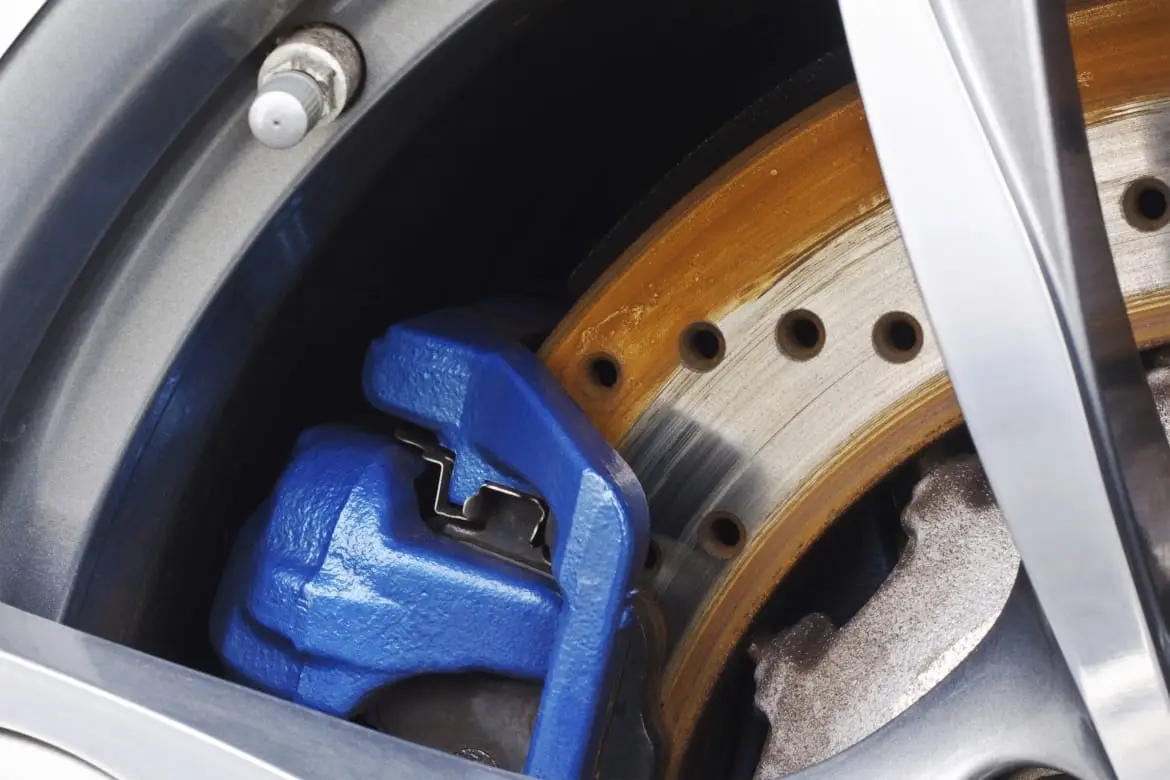Your car’s brake system is a complex network of components, and over the years, a number of misconceptions have arisen about how it works. These myths can not only lead to confusion but also to unsafe driving habits and unnecessary repairs. It’s time to set the record straight. Let’s debunk some of the most common myths about brake pads and rotors to help you drive safer and smarter.
Myth #1: Squealing Brakes Always Mean My Pads Are Worn Out.
Reality: While a high-pitched squeal can be a sign that your pads are worn down to their wear indicators, it isn’t the only cause.
- Dust and Debris: Debris, dirt, or dust trapped between the brake pad and rotor is a very common cause of squealing, especially after driving on a dirt road.
- Moisture: A light squeal or chirp can often be heard on a damp morning. This happens as the moisture evaporates from the rotors and pads, and it’s completely normal.
- Pad Material: Some brake pads, especially high-performance or semi-metallic formulations, are engineered to work at higher temperatures and can naturally produce a squeal, even when new.
The take-away: Don’t panic at the first squeal, but if the noise is persistent, have your brakes inspected by a professional.
Myth #2: Brake Rotors “Warp” When They Get Hot.
Reality: This is one of the most widespread and incorrect myths in the automotive world. Rotors are made of durable cast iron and are highly resistant to warping under normal driving conditions.
- Uneven Friction Material Deposits: What is often diagnosed as a “warped rotor” is actually an uneven deposit of friction material from the brake pads onto the rotor’s surface. This happens when brakes are overworked and a driver holds the pedal down when the car is stopped. The pads leave a “ghost” impression of their material, creating an uneven surface.
- What it Feels Like: This uneven surface causes the pulsation or vibration you feel in the brake pedal, which many people mistake for a warped rotor.
The take-away: To prevent this, avoid holding your foot on the brake pedal at a long stop after heavy braking.
Myth #3: All Brake Pads Are Basically the Same.
Reality: This couldn’t be further from the truth. Brake pads come in different formulations, each with unique performance characteristics.
- Organic: Quiet and gentle on rotors, but they can wear faster.
- Semi-Metallic: Offer great performance and heat dissipation, but they can be noisier and produce more brake dust.
- Ceramic: The modern standard. They are quiet, produce very little dust, and provide excellent, consistent braking.
The take-away: Choosing the right brake pad for your vehicle and driving style is essential for optimal safety and performance.
Myth #4: You Should Resurface Your Rotors Every Time You Replace Your Brake Pads.
Reality: This is often unnecessary and can reduce the lifespan of your rotors.
- Resurfacing vs. Inspection: While it was once common practice to resurface rotors, modern brake components and advanced technology make it less common. A mechanic should first inspect your rotors for significant wear, grooves, or cracks.
- Discard Specifications: Rotors have a minimum thickness specification. If the rotor is still within this limit and is in good condition, it may not need to be resurfaced or replaced.
The take-away: Always ask your technician to check the rotor’s condition. If it is in good shape and within its service limits, it is often best to keep it.
Myth #5: Brake Fluid Lasts Forever.
Reality: This is a dangerous myth. Brake fluid is hygroscopic, which means it naturally absorbs moisture from the air over time.
- Reduced Boiling Point: The absorbed moisture lowers the fluid’s boiling point. Consequently, under heavy braking, the fluid can boil and create compressible vapor bubbles in the brake lines, leading to a spongy pedal and a total loss of braking power.
- Internal Corrosion: Moisture can also cause corrosion inside your brake lines and other vital components.
The take-away: Most manufacturers recommend a brake fluid flush every two to three years.
Conclusion: Trust a Pro, Not a Myth
Ultimately, the best way to ensure your brakes are performing optimally is to rely on facts, not fiction. A professional inspection from a qualified technician is the best way to diagnose any braking issue and ensure your vehicle is safe to drive. By understanding these common brake myths, you can be a more informed and safer driver.




